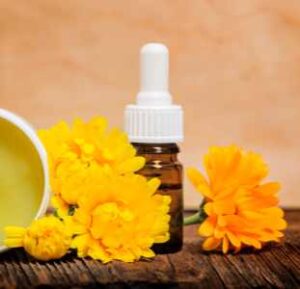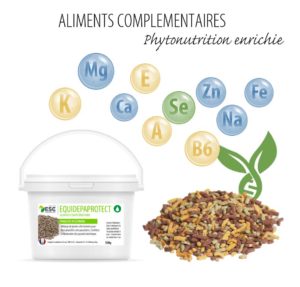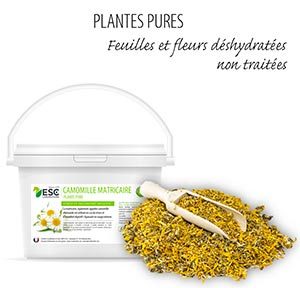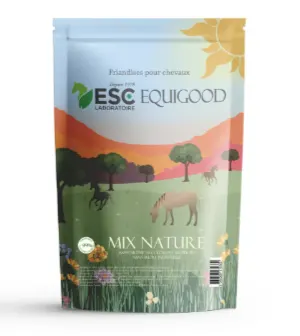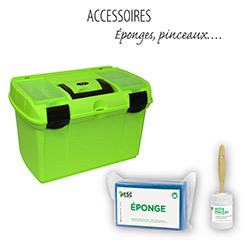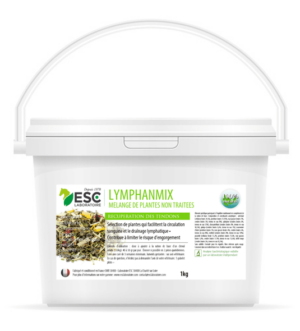Lymphangitis is a potentially serious equine condition caused by bacterial infection of the lymphatic system. It usually manifests on the posterior limbs that will be warm, painful, and extremely clogged.
When she is not on time, lymphangitis can cause permanent damage. Why it is important to understand this pathology, which can cause it, and how to relieve your horse, or even prevent lymphagit.
Lymphangitis: What is it?
Lymphangitis, vasculitis, staphylococcal infection or cellulitis. Whatever name you give him, this recurrent bacterial infection which results in swelling of the limbs affects many horses – of all races – is one of the main causes of lameness.
The "ite" suffix indicates a « inflammation » lymphatic system (lymphangitis), blood vessels (vasculitis) or subcutaneous connective tissue (cellulitis).
Many horses go develop subcutaneous oedema (liquid swell) in two or more members (usually the posterior limbs). This minor problem is frequently observed in horses who have experienced a significant decrease in their exercise.
Muscle contraction promotes the return of blood and blood Lymphatic fluid to the heart. The lower equinal limb does not have muscles to contract and therefore has to lean on unidirectional valves in its vessels to hold the fluids and on the movements to push them up. In the case of congestion associated with immobilization, swelling will naturally reduce with the resumption of exercise.
Lymphagit is nevertheless A much more alarming affection. Din this case, there is sudden sudden swelling of a limb (usually a posterior) extreme pain that causes the horse to limp and an increase in animal temperature.
Most often, the horses affected do not eat (probably due to fever and pain) and are clearly depressed. Some tremble, breathe quickly and sweat. On examination, the member will present an oedema (when you tighten it, you will see the fingerprints of your fingers in the tissue), and the horse will lift the sword so high to avoid your contact that it will risk falling.
Causes of lymphangitis in horses
Lymphangitis is caused by pathogens who entered the body of the horse through an opening of the skin..
It can thus develop following injury, a cut, abrasion, insect sting, injection or other skin condition such as the skin, mud scab.
The most commonly associated types of bacteria Lymphangitis in horses include streptococcus, staphylococcus (Staphylococcus aureus) and lischerichia coli. But lymphangitis can also be caused by fungal infection. We will then talk about epizootic lymphangitis.
These pathogens thrive mainly in wet environments and muddy. Horses that remain for several hours standing in the mud are more likely to suffer from lymphangitis as the natural sebum barrier of their epidermis is not strong enough to prevent infection.
The main symptoms of lymphangitis
Most often, lymphagit affects only one posterior limb. It results mainly in a large swelling of the limb, sometimes over its entire height and often rapid onset. But other symptoms may also occur in horses with lymphangitis such as:
- High heat from the affected limb;
- Skin cracking;
- Yellow discharge that can burn the skin;
- Pain associated with lameness;
- Lack of appetite;
- A fever;
- Thea lethargy.
If you suspect lymphangitis in your horse, consult your veterinarian immediately to determine if he suffers from lymphangitis or another less urgent disease. In fact, ill-treated infectious lymphangitis may develop into sepsis and have a life-threatening effect on the animal.
How to treat lymphangitis?
Diagnosis of lymphangitis is usually performed through clinical examination and examination and clinical examination. a sampling with a swab on the wound or skin. It will then allow the veterinarian to prescribe appropriate antibiotics to the horse, which is crucial because of increased bacterial resistance.
The systemic antibiotics by general injection often used to ensure that the animal receives a full dose (and avoids eating antibiotics in the animal's diet).
Although many cases of lymphangitis are triggered by infection, simple antibiotic treatment is rarely sufficient. Symptoms should also be treated such as swelling (especially when it is important or installed), fever and pain. The veterinarian may prescribe anti-inflammatory drugs, diuretics to reduce swelling, potassium diodiode solution, DMSO infusion, etc.
In short, it is common that medical treatment alone does not resolve severe lymphangitis and local care such as hydrotherapy (via cold water jets or, better still, a equine spa) may be necessary. The realization of a so-called "sudative bandage" (which will "save" the member's water) by your veterinarian may be necessary in the most serious cases. Application‘Clay and/or rest groups may also be useful. Moderate exercise is recommended when the animal can walk
Similarly, massage therapy by a qualified practitioner can be useful if the skin has not been affected. But massage can also worsen the situation, Because the skin on an swollen limb is very fragile.
Preventing lymphangitis
For recurrent cases, detection and early treatment of swelling of the limbs is the first measure to prevent the return of lymphagit. But the main factor you can control to protect your horse is the cleanliness of its environment.
Keep stables clean and especially limiting your horse's exposure to moisture to the maximum is the best way to reduce the risk of lymphangitis, but also to avoid contamination of a wound, abrasion or skin injury. Also make sure that the box or enclosure is free of wires or tools that can cause cuts.
There is no less that any horse can develop lymphangitis, even in the best conditions. To prevent it as much as possible, we advise you to:
- wash the muddy limbs of your horse after exercise and dry them thoroughly;
- Closely monitor the limbs to detect any cut or scratch;
- Clean and disinfect all skin wounds as quickly as possible;
- Protecting its members when exercising;
- Wash brushes regularly
Our laboratory has developed a unique mixture of 8 plants intended to support the body of your horse in case of lymphangitis or congestion. This natural complementary feed for horses has the peculiarity of facilitating blood circulation and lymphatic drainage.
In case of ad hoc congestion (e.g. linked to immobilization) and in addition to a cure with a draining plant such as the Dandelion, you can also use external clay to tighten the fabrics.
FAQ
My horse has "pots" is lymphangitis?
A horse with poles doesn't necessarily suffer from lymphangitis. The causes, symptoms and treatments to apply will not be the same. Hence the importance of consulting your veterinarian to make the right diagnosis. To mention only a few causes, congestion may be secondary to lack of exercise, poor tissue quality, trauma (tentinitis, sprain), etc.
Is a congestion necessarily lymphangitis?
Lymphangitis is characterized by a severe and painful swelling of a member, often posterior. However, unlike congestion, it is caused by infection.
What is the healing time of lymphangitis?
This depends on the severity of the infection and the speed of management. Lymphangitis may take weeks to be treated and the limb may remain fragile and subject to congestion.
Can lymphagit be fatal?
If not treated, lymphangitis can spread to other areas of the body and cause a widespread infection, called sepsis, which is potentially fatal.


